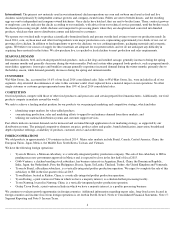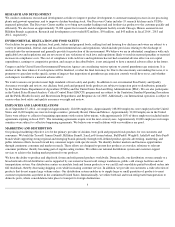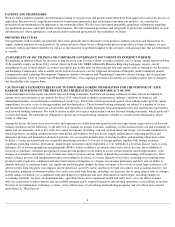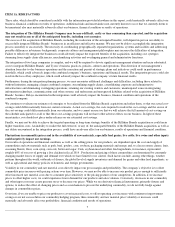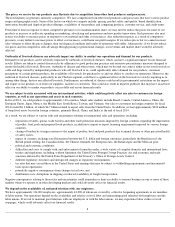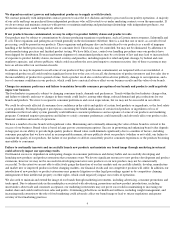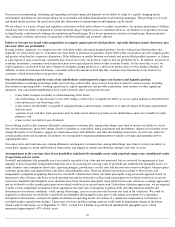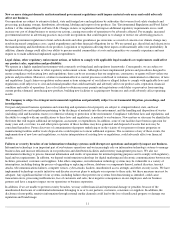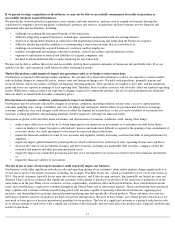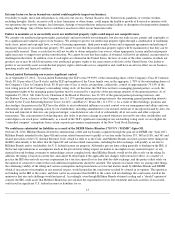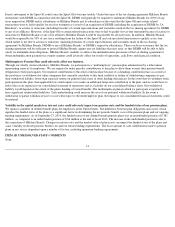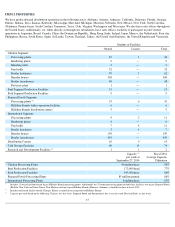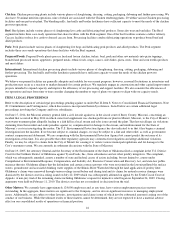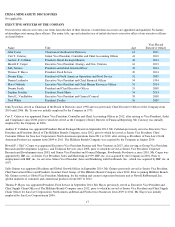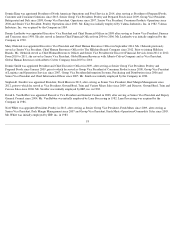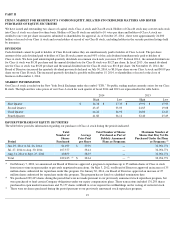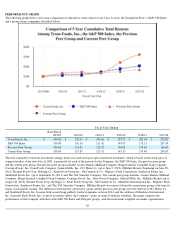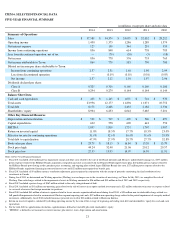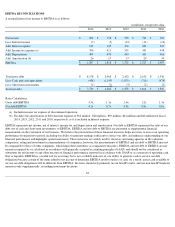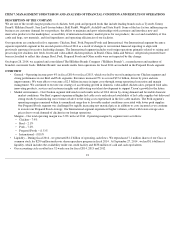Tyson Foods 2014 Annual Report Download - page 16
Download and view the complete annual report
Please find page 16 of the 2014 Tyson Foods annual report below. You can navigate through the pages in the report by either clicking on the pages listed below, or by using the keyword search tool below to find specific information within the annual report.
Events subsequent to the Spin-Off could cause the Spin-Off to become taxable. Under the terms of the tax sharing agreement Hillshire Brands
entered into with DEMB in connection with the Spin-Off, DEMB will generally be required to indemnify Hillshire Brands for 100% of any
taxes imposed on DEMB and its subsidiaries or Hillshire Brands and its subsidiaries in the event that the Spin-Off and certain related
transactions were to fail to qualify for tax-free treatment as a result of an acquisition of DEMB (including the acquisition of DEMB by J.A.
Benckiser), or actions or omissions (including breaches of certain representations and warranties made in the tax sharing agreement) by DEMB
or any of its affiliates. However, if the Spin-Off or certain related transactions were to fail to qualify for tax-
free treatment because of actions or
omissions by Hillshire Brands or any of its affiliates, Hillshire Brands would be responsible for all such taxes. In addition, Hillshire Brands
would be responsible for 50% of any taxes resulting from the failure of the Spin-Off and certain related transactions to qualify as tax-free,
which failure is not due to actions or omissions (including breaches of certain representations and warranties made in the tax sharing
agreement) by Hillshire Brands, DEMB or any of Hillshire Brands’ or DEMB's respective subsidiaries. There can be no assurance that the tax
sharing agreement will be sufficient to protect Hillshire Brands against any tax liabilities that may arise, or that DEMB will be able to fully
satisfy its indemnification obligations. Hillshire Brands’ inability to enforce the indemnification provisions of the tax sharing agreement or
obtain indemnification payments in a timely manner could adversely affect our results of operations, cash flows and financial condition.
Multiemployer Pension Plan could adversely affect our business.
Through our wholly owned subsidiary, Hillshire Brands, we participate in a “multiemployer” pension plan administered by a labor union
representing some of its employees. We are required to make periodic contributions to this plan to allow them to meet their pension benefit
obligations to their participants. Our required contributions to this fund could increase because of a shrinking contribution base as a result of
the insolvency or withdrawal of other companies that currently contribute to this fund, inability or failure of withdrawing companies to pay
their withdrawal liability, lower than expected returns on pension fund assets or other funding deficiencies. In the event that we withdraw from
participation in this plan, then applicable law could require us to make an additional lump-sum contribution to the plan, and we would have to
reflect that as an expense in our consolidated statement of operations and as a liability on our consolidated balance sheet. Our withdrawal
liability would depend on the extent of the plan's funding of vested benefits. The multiemployer plan in which we participate is reported to
have significant underfunded liabilities. Such underfunding could increase the size of our potential withdrawal liability. In the event a
withdrawal or partial withdrawal was to occur with respect to the multiemployer plan, the impact to our consolidated financial statements could
be material.
Volatility in the capital markets or interest rates could adversely impact our pension costs and the funded status of our pension plans.
We sponsor a number of defined benefit plans for employees in the United States. The difference between plan obligations and assets, which
signifies the funded status of the plans, is a significant factor in determining the net periodic benefit costs of the pension plans and our ongoing
funding requirements. As of September 27, 2014, the funded status of our defined benefit pension plans was an underfunded position of $ 381
million , as compared to an underfunded position of $ 86 million at the end of fiscal 2013. The increase in the underfunded position is due to
the acquisition of Hillshire Brands. Changes in interest rates and the market value of plan assets can impact the funded status of the plans and
cause volatility in the net periodic benefit cost and our future funding requirements. The exact amount of cash contributions made to pension
plans in any year is dependent upon a number of factors, including minimum funding requirements.
ITEM 1B. UNRESOLVED STAFF COMMENTS
None.
14


